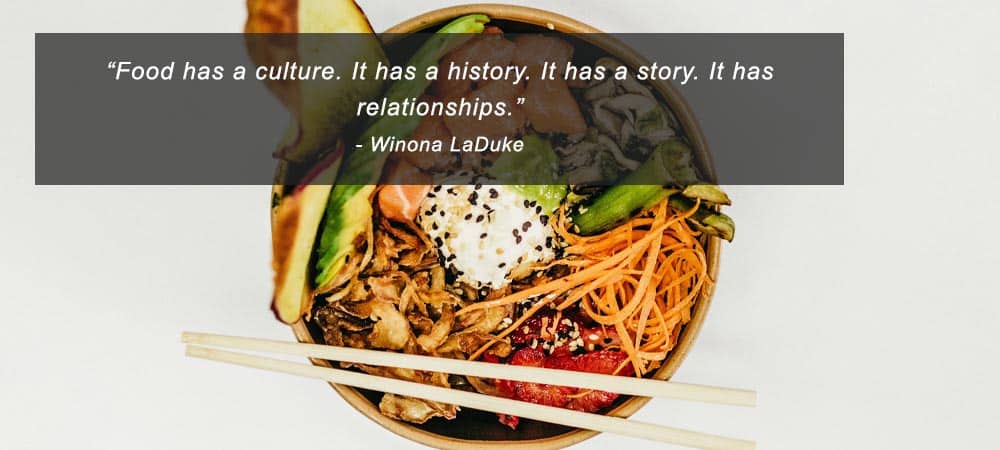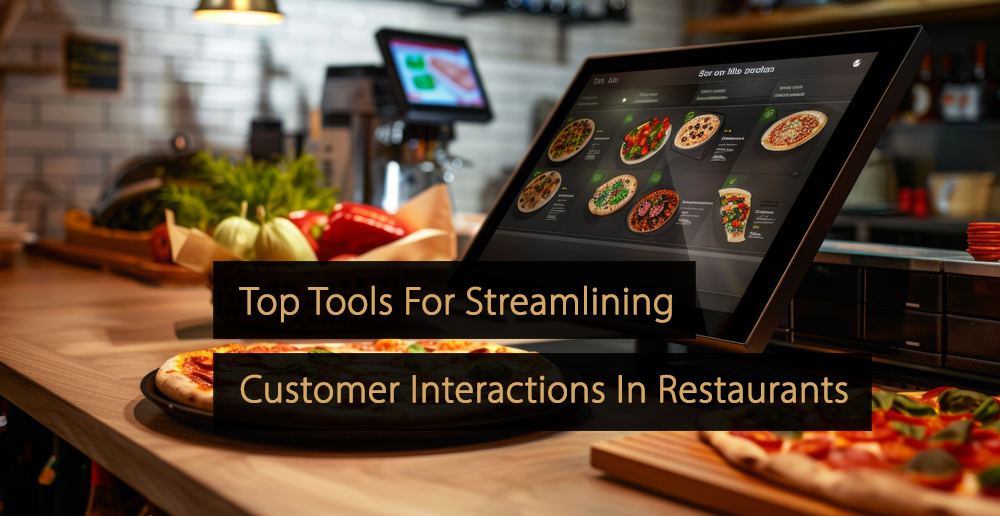Keeping pace with the latest restaurant trends is essential for effective management because it enables you to meet and exceed the expectations of your customers and your employees while ensuring you remain competitive and maximize revenue and profit margins. In this article, you can learn about some of the most vital technology, marketing, and food trends for 2025 that will impact the industry in the months and years to come.
Table of Contents:
- What is the Restaurant Industry?
- Why Should You Keep Pace With the Latest Restaurant Trends?
- 18 Restaurant Trends You Must Know As a Restaurateur in 2025
- Everything to Know About Restaurant Management
- An Overview of the Latest Restaurant Technology
- Exploring the Key Restaurant Marketing Trends
What is the Restaurant Industry?
Before taking a closer look at the major restaurant trends, it is useful to explore the restaurant industry. Essentially, this is the section of the service industry covering restaurants of all kinds – with the word restaurant meaning an establishment that serves food that is prepared on the premises and able to be consumed on-site. The option for on-site dining is crucial, although many restaurants do also offer takeaway and delivery services.
In the “Restaurant Industry: Overview, Types, Examples and More” guide, you will have access to a comprehensive definition of the industry, a breakdown of the main restaurant types, and plenty of additional information.
Why Should You Keep Pace With the Latest Restaurant Trends?
Making a conscious effort to stay up-to-date with the latest restaurant trends is one of the most common restaurant management tips you will find – and for good reason. It can potentially allow you to achieve growth, enhance your reputation, improve the customer experience, and make life easier for your own employees.
Customers are generally willing to pay more for a better experience. By embracing new trends, you can make ordering processes easier, improve the quality of service in your restaurant, and reduce errors. This can do wonders for your reputation, leading to positive word of mouth and better online reviews.
Innovations in technology and food options can help you stand out from rival restaurants and attract more customers. Rivals will also be implementing new ideas, so you need to keep up-to-date to remain competitive. On top of all this, embracing the latest technology could also help you to reduce labor costs.
18 Restaurant Trends You Must Know As a Restaurateur in 2025
In the sections and sub-sections that follow, you will be able to learn about 18 of the most essential restaurant trends to know about. Along the way, you will also understand how each trend can help you.
Restaurant Technology Trends
First, it is important to take a look at the restaurant trends related to technology. Understanding which technology solutions you need to implement and what customers expect is crucial for achieving lasting success.
1. Continued Growth of Online Ordering
Online ordering has been among the dominant restaurant trends for many years and hit new heights during the COVID-19 pandemic, as many restaurants turned to online ordering to stay afloat. In the aftermath, many restaurants realized the benefits of continuing to offer online ordering for customers.
The most obvious examples of online ordering are for takeaways and food deliveries. These orders are often placed using third-party apps, but more and more restaurants are offering their own online food ordering system. However, online ordering can also be used within the restaurant, circumventing the waiting process of staff taking orders.
2. Expansion of Contactless Payments
Contactless payments are another of the major restaurant trends that restaurateurs need to be aware of. Customers value contactless payments for various reasons, including the speed of the payment process and the hygiene benefits associated with simply tapping a card or smartphone onto a machine, rather than entering a PIN.
When contactless payments are supported, customers can quickly and easily pay using a credit card, debit card, or mobile wallet, such as Apple Pay or Google Pay. Many restaurants also build support for Apple Pay and Google Pay into their restaurant ordering system, allowing customers to pay from their phones at the table.
3. Emergence of Ghost or Virtual Kitchens
Ghost kitchens or virtual kitchens are commercial kitchens used exclusively for food delivery purposes. One of the key restaurant trends allowing restaurateurs to achieve growth has been the use of ghost kitchens in addition to the main restaurant, to capitalize on high demand for food delivery services.
With a ghost kitchen, the storefront is entirely digital, and the space is used exclusively to prepare meals for deliveries. This allows restaurants to scale up their delivery services and optimize delivery times, while avoiding a situation where the main restaurant kitchen becomes overrun with orders, or where on-site customers experience delays.
What Is A Cloud Kitchen? | Virtual Restaurant Business Model
4. Automated Interactions With Customers
For restaurateurs, delivering excellent customer service is a top priority, but customers’ demands in this area are greater than ever. Customers expect to be able to reach your restaurant using a variety of channels, and they expect swift responses to questions and complaints, regardless of when they make contact.
With this in mind, it is perhaps little surprise that one of the biggest restaurant trends of recent times has been the increased use of automation technology in this area. This is most commonly achieved through AI-powered restaurant chatbots, which can deliver automated, intelligent responses in a matter of seconds, on a 24/7 basis.
5. AI Delivery Vehicles and Delivery Bots
The use of automation is also spreading to other areas, with automated deliveries serving as one of the most exciting restaurant trends. Again, this can take different forms, but two main options are available.
Some restaurants have already experimented with AI-powered delivery bots. These robots can be given meals for takeaway customers and use AI and GPS technology to make their way to the destination intelligently. An alternative to this, which will become increasingly viable, involves using driverless cars to make food deliveries.
6. VR, AR and Immersion in Restaurants
Immersive technology has disrupted many industries, allowing customers to get a better sense of a business, brands, or location before or during the booking process. In terms of active restaurant trends, many companies already have VR and AR, helping to take the customer experience to the next level.
Imagine, for example, customers taking a quick virtual reality tour of your restaurant to experience the view from their table and see all of the facilities before booking. VR and AR can also be deployed to provide “behind the scenes” content, or to allow customers to see what a meal will look like before ordering.
7. Advanced Online Table Reservations
Online table reservations are a firmly established restaurant trend, with customers often finding it easier to book from their smartphone, laptop, tablet, or desktop computer than the traditional method of calling the restaurant. However, this is one of the technology-based restaurant trends that is continually evolving.
Restaurants use ever-more advanced booking engines and restaurant management software, allowing customers to go further than before. For instance, rather than simply choosing how many people will be at the party and what time slot they want, customers may have the option of where to sit, complete with live availability information.
8. Increased Use of Scannable QR Codes
QR codes are one of the major restaurant trends relevant to the on-site ordering experience. With QR code scanning, customers can sit at their table, scan the QR code on the menu or on their table, and be directed to the restaurant ordering system on their smartphone. From there, they can place their order without assistance from waiting staff.
In addition to benefiting customers, this ordering process can make life easier for staff, reducing workloads, and improving order-taking accuracy. QR codes can be added to takeaway menus, newspaper advertisements, and other forms of restaurant advertising, linking customers to your booking engine or smartphone app.
Restaurant Marketing Trends
Any good marketing strategy for restaurants also needs to consider current trends. The following sections can explore some of the major restaurant trends relevant to marketing teams.
9. Customer Service Through Social Media
Social media customer service will continue to be among the dominant restaurant trends. Many customers are beyond the point where they will email or call restaurants. They want to be able to ask questions, interact, make suggestions, or air their criticism through social media channels, and restaurants must meet customers where they are.
The important aspects to focus on with social media-based customer service are fast response times, a friendly tone, and acceptance and sincere apologies when mistakes have been made. You should also post interesting content, which attracts engagement and allows you to have more organic, pleasant interactions with customers.
4 Ways to Use Social Media for Customer Service and Support
10. Rewarding Customers via Loyalty Programs
Unlike some of the other restaurant trends, loyalty programs directly target existing customers, as they provide a clear incentive for people to keep coming back. They are also easier than ever to implement, thanks to the modern prevalence of smartphone apps, where customers create their own accounts.
Loyalty programs can reward customers in a variety of ways. You could offer a discount after every fifth visit to the restaurant, for instance, or you might provide free menu items or free delivery after a certain number of takeaway orders. When used effectively, loyalty schemes help to maximize the lifetime value of each of your customers.
11. Continued Rise of Short-Form Videos
When it comes to digital marketing for restaurants, one of the most promising restaurant trends is the publication of short-form video content. According to HubSpot, short-form video content is both the most popular and the highest ROI format for social media marketing, while also experiencing the biggest growth of any trend.
Short-form videos generally describe videos that are under 60 seconds in length. They are quick and easy to consume, do not require much data to watch, and allow you to quickly convey important messages, or build your brand identity. The main platforms to focus on include TikTok, Instagram Reels, Facebook Stories, YouTube Shorts, and X (Twitter).
12. Leveraging User-Generated Content
User-generated content refers to any content that is created by your customers or by users on social media channels, rather than coming directly to your business. With that being said, restaurants can still harness user-generated content as part of an effective marketing strategy, and doing so is one of the key restaurant trends right now.
Think about the layout of your restaurant and the atmosphere. Does it make it easy for customers to take photos of their meals for sharing on Instagram? Are you giving customers reasons to want to write positively about your restaurant online? You might even consider setting up special photo-friendly tables, or dedicated photography areas.
13. Encouraging and Managing Online Reviews
Online reviews form a major part of the modern restaurant industry, and managing reviews is a key aspect of marketing, restaurant revenue management, and reputation management. Many customers seek out reviews before booking a restaurant, so you need to encourage customers to leave feedback. However, you also need to manage online reviews.
Focus on providing great food and experiences, so reviews are as positive as possible. Respond kindly and fairly to negative reviews too, as this can reassure other customers. Reviews can also help you keep pace with restaurant trends because you can gain valuable feedback and learn first-hand about customer expectations.
Restaurant Food Trends
It is also crucial to keep pace with the growing and emerging restaurant trends directly related to the food being served. The following sections will explore some of the main examples of restaurant food trends:
14. Plant-Based Foods, Vegetarianism and Veganism
The growth of plant-based food has been one of the most established and lasting restaurant trends of recent times, but it is also a trend that is not going away. As people become more concerned with issues like climate change and increasingly aware of the realities of meat consumption, demand for plant-based foods is growing.
Restaurants have several options. They can add menu items that focus on vegetables, fruits, nuts, herbs, and spices without including meat. Alternatively, they can use meat replacement products, which aim to replicate the taste and texture of meat. The most important thing is to offer quality menu items for meat-averse customers.
15. Embracing Regenerative Food Production
Regenerative food production is a term that has become something of a buzzphrase in recent times, but it is also one of the restaurant trends you should concern yourself with when it comes to sourcing produce. Essentially, regenerative food production focuses on methods that improve the reliability of harvests and soil health.
Some of the key features include boosting the water cycle, enhancing biodiversity, and reducing the amount of carbon that enters the atmosphere. Restaurants that embrace these production methods, or source ingredients from suppliers who do, can emphasize their green credentials and appeal to climate-conscious diners.
16. Local, Traditional Food and Local Exotic Food
Awareness of climate change has also led to a situation where customers are increasingly concerned about where their food has come from, how far it has been transported, and what the carbon footprint of this is. This, in turn, has created a demand for more traditional, local foods, and many restaurants are finding success by focusing on this.
Yet, another of the key restaurant trends you should be aware of is the rise of “local exotic” foods. In other words, this is where restaurants or suppliers focus on growing exotic produce in the local area, reducing supply chain times and distances. Some restaurants are even starting to grow exotic produce on-site.
17. Turning to Cutting-Edge Food Technology
Meat replacement products and dairy-free alternatives are nothing new, but there is an emerging cutting-edge food technology, which many restaurateurs are very excited about. Some of the main restaurant trends of the years to come could include lab-grown meat products, or precision fermentation techniques.
Lab-grown meat, or cultured meat, is produced using tissue engineering techniques. Essentially, it allows for the mass production of meat from the cells of a single animal, rather than requiring mass slaughtering of animals. Similarly, precision fermentation allows for the creation of dairy products without using an animal.
18. A Shift Towards Healthier Meal Options
Most people have been living for years now with easy access to unhealthy or indulgent meals, which can be delivered straight to their door. There are signs that the novelty of apps offering rapid deliveries of fast food is starting to take its toll, and more and more customers are now seeking the same convenience, with healthier foods.
This opens up great potential for restaurants to jump aboard some of the healthy eating restaurant trends. Whether you want to offer low-calorie foods, guilt-free desserts, gluten-free menu items, reduced-fat options, or options that use healthier cooking methods, there is an ever-growing market for high-quality, healthy meals.
Everything to Know About Restaurant Management
Anyone involved in restaurant management must be aware of restaurant trends, but the role goes much further. Regardless of whether you are working in hotel restaurant management, fine dining, fast food restaurant management, or another area, you are going to be responsible for defining roles, setting expectations, and making your restaurant appealing. All of this requires specific skills, qualifications, and a passion for service.
In the “Restaurant Management: Everything You Need to Know” guide, you can access all of the key information you will need to understand restaurant management, its importance, and the qualities managers need.
An Overview of the Latest Restaurant Technology
Aside from the technology-based restaurant trends mentioned, there are a number of other tech trends to know about. Examples of this include using digital display screens to improve communication in the kitchen, or using air purification technology to improve the air quality in restaurants.
In the “Latest Restaurant Technology Trends You Need to Know About” guide, you can explore some of the uses of technology within the restaurant industry and learn how these solutions help customers and restaurant staff.
Exploring the Key Restaurant Marketing Trends
In addition to the marketing restaurant trends explored in this article, there are numerous other marketing trends to be aware of. For instance, restaurants need to make use of SEO techniques to improve their rankings on search engine results pages. A growing number are also using personalization and community engagement for marketing purposes.
In the “Important Restaurant Marketing Trends to Follow in 2023” guide, you can fully explore these marketing trends and a variety of others, so you can make sure you are promoting your restaurant effectively.
Restaurant Trends FAQs
If you are going to remain competitive in the restaurant industry in the months and years to come, you need to make sure you are constantly keeping your finger on the pulse and reviewing the latest trends. In particular, you need to ensure you are using the latest technology, embracing new food trends, and using up-to-date marketing strategies.
More Tips to Grow Your Business
Revfine.com is the leading knowledge platform for the hospitality and travel industry. Professionals use our insights, strategies, and actionable tips to get inspired, optimize revenue, innovate processes, and improve customer experience.Explore expert advice on management, marketing, revenue management, operations, software, and technology in our dedicated Hotel, Hospitality, and Travel & Tourism categories.
This article is written by:
Hi, I am Martijn Barten, founder of Revfine.com. With 20 years of experience in the hospitality industry, I specialize in optimizing revenue by combining revenue management with marketing strategies. I have successfully developed, implemented, and managed revenue management and marketing strategies for individual properties and multi-property portfolios.










Leave A Comment